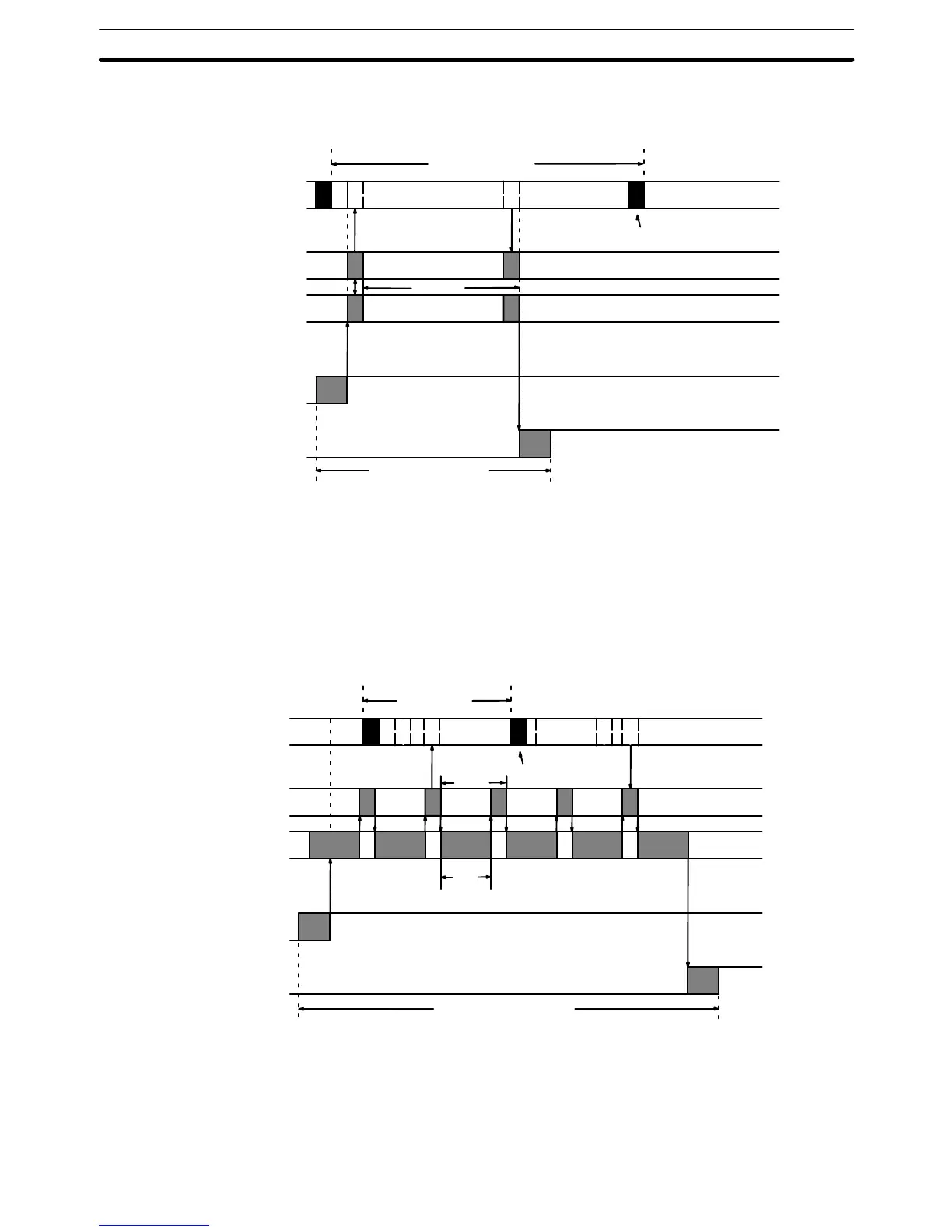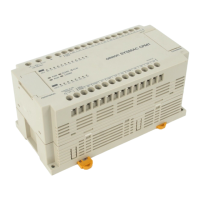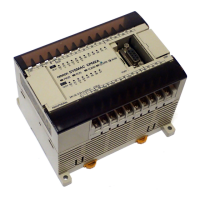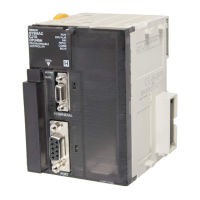488
The PC responds most quickly when the instruction that uses the input signal is
executed between two SYSMAC BUS refreshes. This situation is illustrated be-
low.
Input signal
Output signal
Cycle
Cycle time
I/O refresh
I/O response time
Output ON delay
Input ON delay
Program execution
Buffer in Master
Transmission time
5 ms
Minimum I/O response time = Input ON delay +
Refreshing interval (5 ms × n)+ Master transmission time
+ Output ON delay
Where, n = Number of SYSMAC BUS Remote I/O Master Units
Minimum I/O response time = 1.5 + 5 + 8.2 +15 = 29.7 ms
The PC takes longest to respond when the instruction that uses the input signal
is executed just before SYSMAC BUS refreshing, so the instruction won’t be
executed with the new input bit status until the next cycle. This situation is illus-
trated below.
Input signal
Output signal
Cycle
Cycle time
I/O refresh
I/O response time
Output ON delay
Input ON delay
Program
Buffer in Master
Transmission time
5 ms
Program
T
RM
Maximum I/O response time = Input ON delay + (Cycle time + 10 ms × n) +
+ Master transmission time × 2 + Slave transmission time + Output ON delay
Where, n = Number of SYSMAC BUS Remote I/O Master Units
Master transmission time = Total refresh time for all Slaves controlled =
Sum of all Slave transmission times
Slave transmission time = 1.4 + (0.2 ms × Number of Slave I/O words)
Minimum I/O Response
Time
Maximum I/O Response
Time
I/O Response Time Section 6-5

